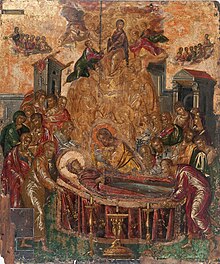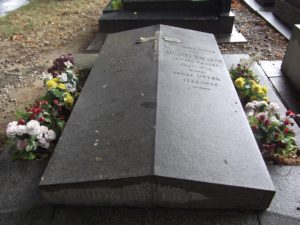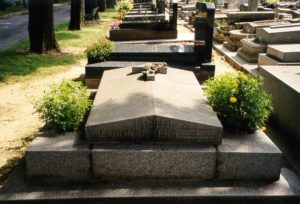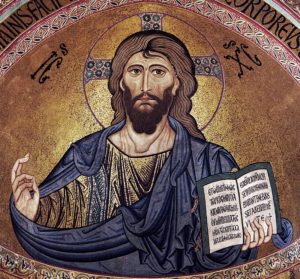 On this day, possibly, in AD 30/33, Jewish leader and religious leader, Jesus Christ, Jesus of Nazareth, Jesus was crucified in Calvary at the age of 33/36. Born c. 4 BC in Judea, Roman Empire. He is the central figure of Christianity, and in my opinion is one of the most influential people in history. Most Christians believe he is the incarnation of God the Son and the awaited Messiah (Christ) prophesied in the Old Testament.
On this day, possibly, in AD 30/33, Jewish leader and religious leader, Jesus Christ, Jesus of Nazareth, Jesus was crucified in Calvary at the age of 33/36. Born c. 4 BC in Judea, Roman Empire. He is the central figure of Christianity, and in my opinion is one of the most influential people in history. Most Christians believe he is the incarnation of God the Son and the awaited Messiah (Christ) prophesied in the Old Testament.
Virtually all modern scholars of antiquity agree that Jesus existed historically, although the quest for the historical Jesus has produced little agreement on the historical reliability of the Gospels and on how closely the Jesus portrayed in the Bible reflects the historical Jesus. Jesus was a Galilean Jew who was baptized by John the Baptist and began his own ministry. He preached orally and was often referred to as “rabbi”. Jesus debated with fellow Jews on how to best follow God, engaged in healings, taught in parables and gathered followers. He was arrested and tried by the Jewish authorities, turned over to the Roman government, and crucified on the order of Pontius Pilate, the Roman prefect. After his death, his followers believed he rose from the dead, and the community they formed eventually became the early Church.
The birth of Jesus is celebrated annually on December 25th (or various dates in January by some eastern churches) as Christmas. His crucifixion is honored on Good Friday and his resurrection on Easter. The widely used calendar era “AD”, from the Latin anno Domini (“in the year of the Lord”), and the equivalent alternative “CE”, are based on the approximate birthdate of Jesus.
Christian doctrines include the beliefs that Jesus was conceived by the Holy Spirit, was born of a virgin named Mary, performed miracles, founded the Christian Church, died by crucifixion as a sacrifice to achieve atonement for sin, rose from the dead, and ascended into Heaven, from where he will return. Most Christians believe Jesus enables people to be reconciled to God. The Nicene Creed asserts that Jesus will judge the living and the dead either before or after their bodily resurrection, an event tied to the Second Coming of Jesus in Christian eschatology. The great majority of Christians worship Jesus as the incarnation of God the Son, the second of three persons of the Trinity. A minority of Christian denominations reject Trinitarianism, wholly or partly, as non-scriptural.
Jesus also figures in non-Christian religions and new religious movements. In Islam, Jesus (commonly transliterated as Isa) is considered one of God’s important prophets and the Messiah. Muslims believe Jesus was a bringer of scripture and was born of a virgin, but was not the son of God. The Quran states that Jesus never claimed divinity. Most Muslims do not believe that he was crucified, but that he was physically raised into Heaven by God. In contrast, Judaism rejects the belief that Jesus was the awaited Messiah, arguing that he did not fulfill Messianic prophecies, and was neither divine nor resurrected.
The Final Footprint
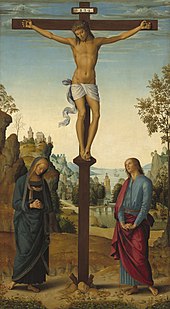
Jesus’ crucifixion is described in all four canonical gospels. After the trials, Jesus is led to Calvary carrying his cross; the route traditionally thought to have been taken is known as the Via Dolorosa. The three Synoptic Gospels indicate that Simon of Cyrene assists him, having been compelled by the Romans to do so. In Luke 23:27–28 Jesus tells the women in the multitude of people following him not to weep for him but for themselves and their children. At Calvary, Jesus is offered a sponge soaked in a concoction usually offered as a painkiller. According to Matthew and Mark, he refuses it.

Tomb of Jesus, Church of the Holy Sepulchre, venerated by some Christians as the place where Jesus was buried.
The soldiers then crucify Jesus and cast lots for his clothes. Above Jesus’ head on the cross is Pilate’s inscription, “Jesus of Nazareth, the King of the Jews.” Soldiers and passersby mock him about it. Two convicted thieves are crucified along with Jesus. In Matthew and Mark, both thieves mock Jesus. In Luke, one of them rebukes Jesus, while the other defends him. Jesus tells the latter: “today you will be with me in Paradise” (Luke 23:43). In John, Mary, the mother of Jesus, and the beloved disciple were at the crucifixion. Jesus tells the beloved disciple to take care of his mother (John 19:26–27).
The Roman soldiers break the two thieves’ legs (a procedure designed to hasten death in a crucifixion), but they do not break those of Jesus, as he is already dead (John 19:33). In John 19:34, one soldier pierces Jesus’ side with a lance, and blood and water flow out. In the Synoptics, when Jesus dies, the heavy curtain at the Temple is torn. In Matthew 27:51–54, an earthquake breaks open tombs. In Matthew and Mark, terrified by the events, a Roman centurion states that Jesus was the Son of God.
On the same day, Joseph of Arimathea, with Pilate’s permission and with Nicodemus’ help, removes Jesus’ body from the cross, wraps him in a clean cloth, and buries him in his new rock-hewn tomb. In Matthew 27:62–66, on the following day the chief Jewish priests ask Pilate for the tomb to be secured, and with Pilate’s permission the priests place seals on the large stone covering the entrance.
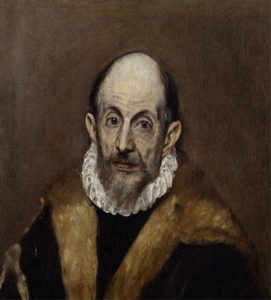 On this day in 1614, painter, sculptor and architect of the Spanish Renaissance El Greco died in Toledo, Spain at the age of 72. Born Doménikos Theotokópoulos in October 1541 in either the village of Fodele or Candia (the Venetian name of Chandax, present day Heraklion) on Crete. El Greco was a nickname, a reference to his Greek origin, and the artist normally signed his paintings with his full birth name in Greek letters, Δομήνικος Θεοτοκόπουλος, Doménikos Theotokópoulos, often adding the word Κρής Krēs, Cretan.
On this day in 1614, painter, sculptor and architect of the Spanish Renaissance El Greco died in Toledo, Spain at the age of 72. Born Doménikos Theotokópoulos in October 1541 in either the village of Fodele or Candia (the Venetian name of Chandax, present day Heraklion) on Crete. El Greco was a nickname, a reference to his Greek origin, and the artist normally signed his paintings with his full birth name in Greek letters, Δομήνικος Θεοτοκόπουλος, Doménikos Theotokópoulos, often adding the word Κρής Krēs, Cretan.
He trained and became a master before traveling at age 26 to Venice, as other Greek artists had done. In 1570 he moved to Rome, where he opened a workshop and executed a series of works. During his stay in Italy, El Greco enriched his style with elements of Mannerism and of the Venetian Renaissance taken from a number of great artists of the time, notably Tintoretto. In 1577, he moved to Toledo, Spain, where he lived and worked until his death. In Toledo, El Greco received several major commissions and produced his best-known paintings.
El Greco’s dramatic and expressionistic style was met with puzzlement by his contemporaries but found appreciation in the 20th century. El Greco is regarded as a precursor of both Expressionism and Cubism, while his personality and works were a source of inspiration for poets and writers such as Rainer Maria Rilke and Nikos Kazantzakis. El Greco has been characterized by modern scholars as an artist so individual that he belongs to no conventional school. He is best known for tortuously elongated figures and often fantastic or phantasmagorical pigmentation, marrying Byzantine traditions with those of Western painting.




El Greco made Toledo his home. Surviving contracts mention him as the tenant from 1585 onwards of a complex consisting of three apartments and twenty-four rooms which belonged to the Marquis de Villena. It was in these apartments, which also served as his workshop, that he passed the rest of his life, painting and studying. He lived in considerable style, sometimes employing musicians to play whilst he dined. It is not confirmed whether he lived with his Spanish female companion, Jerónima de Las Cuevas, whom he probably never married. She was the mother of his only son, Jorge Manuel, born in 1578, who also became a painter, assisted his father, and continued to repeat his compositions for many years after he inherited the studio.
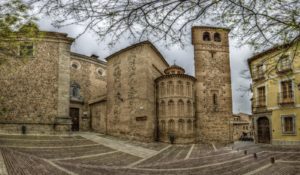 The Final Footprint
The Final Footprint
During the course of the execution of a commission for the Hospital de Tavera, El Greco fell seriously ill, and a month later, he died. A few days earlier, on 31 March, he had directed that his son should have the power to make his will. Two Greeks, friends of the painter, witnessed this last will and testament (El Greco never lost touch with his Greek origins). He was thought to be entombed in the Church of Santo Domingo el Antiguo but the exact location remains unknown.
Gallery
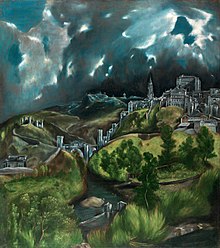
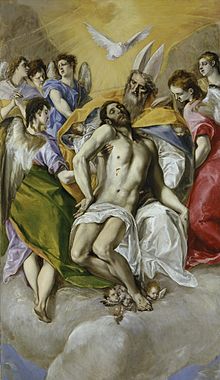



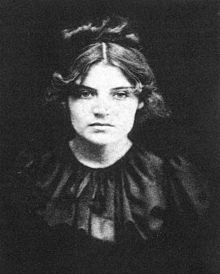 On this day in 1938, French painter and artists’ model, Suzanne Valadon died of a stroke at age 72 in Paris. Born Marie-Clémentine Valadon on 23 September 1865 at Bessines-sur-Gartempe, Haute-Vienne, France. In 1894, Valadon became the first woman painter admitted to the Société Nationale des Beaux-Arts. She was also the mother of painter Maurice Utrillo. The subjects of her drawings and paintings included mostly female nudes, female portraits, still lifes, and landscapes. She never attended the academy and was never confined within a tradition. Valadon debuted as a model in 1880 in Montmartre at age 15. She modeled for over 10 years for many different artists including the following: Pierre-Cécile Puvis de Chavannes, Théophile Steinlen, Pierre-Auguste Renoir, and Henri de Toulouse-Lautrec.
On this day in 1938, French painter and artists’ model, Suzanne Valadon died of a stroke at age 72 in Paris. Born Marie-Clémentine Valadon on 23 September 1865 at Bessines-sur-Gartempe, Haute-Vienne, France. In 1894, Valadon became the first woman painter admitted to the Société Nationale des Beaux-Arts. She was also the mother of painter Maurice Utrillo. The subjects of her drawings and paintings included mostly female nudes, female portraits, still lifes, and landscapes. She never attended the academy and was never confined within a tradition. Valadon debuted as a model in 1880 in Montmartre at age 15. She modeled for over 10 years for many different artists including the following: Pierre-Cécile Puvis de Chavannes, Théophile Steinlen, Pierre-Auguste Renoir, and Henri de Toulouse-Lautrec.
The Final Footprint – Valadon is buried in the Cimetière de Saint-Ouen in Paris. Saint-Ouen is located just north of Montmartre at Saint-Ouen, near Paris, France. The cemetery consists of two parts. The first, located on Rue Adrien Lesesne opened in 1860 and the second at 2 Avenue Michelet was opened on 1 September 1872.
Gallery
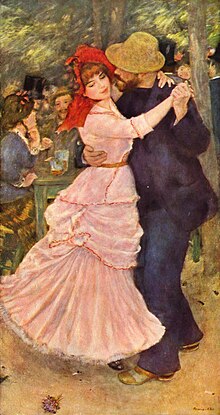
Dance at Bougival, by Renoir; the female dancer is Valadon.

Casting of the Net, 1914
-
-

Self-Portrait, 1883
-
-
-

My Son at 7 Years Old
-
-
-

Self-Portrait, 1893
-
-
-

Nude, 1895
-
-
-

Portrait of Erik Satie, 1893
-
-
-

The Bath, 1908
-
-
-

Nudes, 1919
-
-
-

Flowers on a Round Table, 1920
-
-
-

Portrait of Maurice Utrillo
-
-
-

Portrait of the Painter Maurice Utrillo, 1921
-
-
-

Still Life with Tulips and Fruit Bowl, 1924
-
-
-

Bouquet of Flowers, 1928
-
-
-

Still Life with Basket of Apples Vase of Flowers, 1928
-
-
Young Girl in Front of a Window, 1930
Portraits of Valadon
-
-

The Hangover (Suzanne Valadon), by Toulouse-Lautrec.
-
-
-

Profile portrait of Suzanne Valadon, by Renoir.
-
-

Portrait of Suzanne Valadon, by Henri de Toulouse-Lautrec
OTD in 1955 silent film and stage actress (The She-Devil, The Unchastened Woman, Madame Mystery) The Vamp, Theda Bara died at California Lutheran Hospital in Los Angeles from stomach cancer, aged 69. Great Mausoleum, Forest Lawn Memorial Park Cemetery in Glendale, California
#RIP #OTD singer-songwriter John Prine died of complications caused by COVID- 19 in Nashville, age 73. As expressed in his song “Paradise”, half of his cremated remains were spread in Kentucky’s Green River, the other half were buried next to his parents in Oakridge-Glen Oak Cemetery
Hillside, Illinois
Have you planned yours yet?
Follow TFF on twitter @RIPTFF

